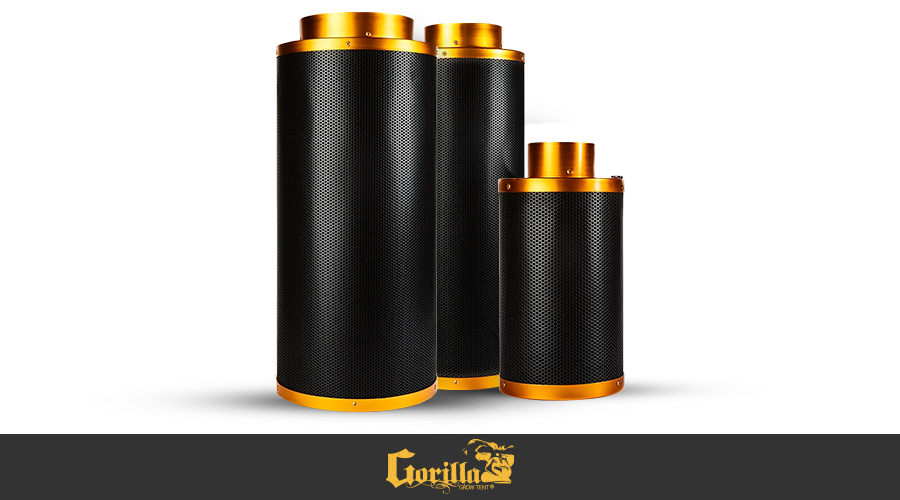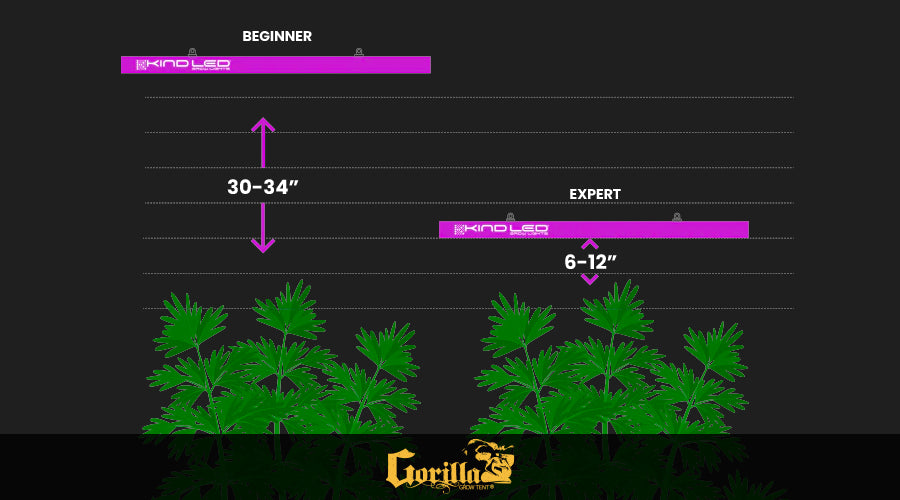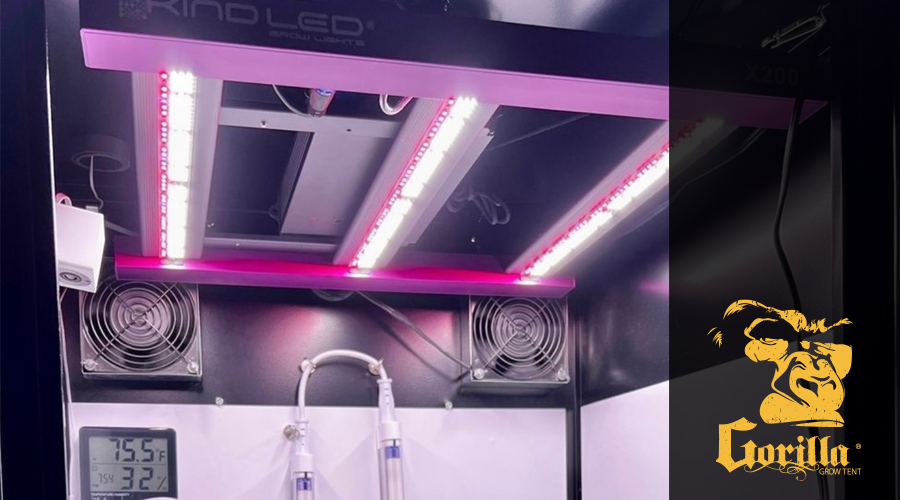
A Complete Guide to Setting Up a Carbon Filter in Your Grow Tent
If you're an enthusiastic indoor gardener, a grow tent can be a game-changer for cultivating your favorite plants all year round. Incorporating a carbon filter into your grow tent setup is essential to ensure successful and odor-free indoor gardening.
In this guide, we'll walk you through the step-by-step process of setting up a carbon filter to keep your growing space fresh and healthy.
Understanding Carbon Filters and How They Work
Before diving into the setup process, it's essential to understand what a carbon filter does and how it works. A carbon filter is a device that uses activated carbon to eliminate unwanted odors and volatile organic compounds (VOCs) from the air. It works through adsorption, where the carbon traps and holds odorous molecules, ensuring that the expelled air is free of any foul smells.
Choosing the Right Carbon Filter
Selecting the appropriate carbon filter is crucial for effective odor control. Consider the size of your grow tent and the airflow requirements of your exhaust system. A properly sized filter will ensure that all the air passing through it gets effectively treated. Additionally, look for high-quality filters with sufficient activated carbon for optimal performance.
Positioning Your Carbon Filter and Exhaust Fan
The correct placement of your carbon filter and exhaust fan is vital to maximize efficiency. Place the carbon filter at the top of your grow tent as hot air rises, carrying the odor. Connect the carbon filter to the exhaust fan using a ducting system, forcing the air through the filter before expelling it outside or into a designated exhaust area.
Setting Up the Ducting System
You'll need a ducting system to connect the carbon filter to the exhaust fan and the grow tent. Use high-quality, flexible ducting that fits securely onto both the filter and the fan. Avoid sharp bends in the ducts to maintain smooth airflow and prevent clogs.
Sealing and Securing Connections
Properly seal all connections between the carbon filter, ducting, and exhaust fan to prevent air leaks. Leaks can compromise the effectiveness of the filtration process and lead to the escape of unwanted odors. Use duct tape or clamps to secure the connections firmly.
Testing the Setup
Before you start growing, testing your carbon filter setup is essential. Run your exhaust system and monitor the airflow and any potential leaks. You can use a handheld smoke generator or incense to detect escaping air. Adjust and reinforce the connections as needed.
Maintenance and Filter Replacement
To keep your carbon filter working efficiently, regular maintenance is crucial. Check the filter periodically for any signs of wear and tear or clogging. Most filters will need replacement every 6 to 12 months, depending on the size of your grow tent and the number of plants you're cultivating.
Controlling Airflow and Temperature
Maintaining proper airflow and temperature within your grow tent is crucial for the health of your plants. Carbon filters can slightly reduce airflow, so it's essential to calculate the correct CFM (cubic feet per minute) rating for your exhaust fan to compensate for the resistance introduced by the filter. An adequate CFM rating will ensure efficient air exchange, allowing plants to receive fresh air and preventing excessive heat buildup.
Setting Up a Carbon Filter for Your Grow Tent
Preparing the Grow Tent
Before installing the carbon filter, ensure your grow tent is properly set up and ready for cultivation. Ensure the tent is clean and all equipment, such as lights and fans, is correctly installed. This preparation will simplify the carbon filter setup process and prevent any disturbances to your plants once they are inside the tent.
Carbon Filter Placement
As mentioned earlier, position the carbon filter at the top of your grow tent, near the exhaust fan. If possible, use adjustable hangers to suspend the filter from the tent's frame. This setup will ensure the expelled air travels throughely removing the entire grow space, effectivunwanted odors.
Consider a Pre-Filter
Adding a pre-filter before the main carbon filter can extend its lifespan by capturing larger particles and dust. The pre-filter helps prevent clogging of the main filter, ensuring it operates efficiently for a more extended period. Pre-filters are typically washable and reusable, so make sure to clean them regularly.
Noise Reduction
Exhaust fans and carbon filters can generate some noise as they work. To minimize the noise levels in your grow space, consider using insulated ducting and installing a silencer or a muffler on the exhaust fan. These accessories can significantly reduce the sound produced by the ventilation system.
Monitor and Adjust
After setting up the carbon filter, monitoring its performance regularly is essential. Use your sense of smell to check for any lingering odors in the grow tent. If you detect any smells, inspect the connections, and ensure that the filter is working correctly. Adjust the exhaust fan's speed to maintain an ideal airflow and odor control balance.
Odor Control Beyond the Grow Tent
If your indoor gardening space is located where odor could become an issue, such as near neighbors or public spaces, consider installing an additional odor control system outside your grow tent. This may include a carbon filter box or an inline ozone generator, which can further neutralize any escaping odors.
Tips for Perfecting Carbon Filter Installation in Your Grow Tent
Airflow Direction
When installing the carbon filter and exhaust fan, ensure that the airflow moves in the right direction. Typically, air should be pulled from the bottom of the grow tent, pass through the carbon filter, and then be expelled out through the exhaust fan at the top of the tent. This setup ensures that odorous air is effectively filtered before being released.
Monitor Environmental Factors
Aside from temperature and humidity, keep an eye on other environmental factors that can affect your plants' health. These include CO2 levels, which are vital for photosynthesis. If your exhaust system significantly reduces CO2 levels, you may need to supplement with CO2 to maintain optimal plant growth.
Avoid Overloading the Filter
Although carbon filters are efficient, they do have limitations. Avoid overloading the filter with excessive odors or contaminants that could saturate the carbon prematurely. If you're dealing with particularly strong odors, consider using additional odor-absorbing materials like Ona gel or carbon-impregnated filter sleeves.
Optimal Fan Speed
Finding the right fan speed is crucial for both effective odor control and energy efficiency. Running the fan at the highest speed might remove odors more quickly but can also lead to faster carbon degradation and increased noise. Experiment with different fan speeds to strike the right balance for your setup.
Cleaning and Reusing Filters (if applicable)
Some carbon filters are designed to be cleaned and reused. If you have a washable filter, follow the manufacturer's instructions for cleaning intervals and methods. Properly maintaining a reusable filter can extend its lifespan and save you money on replacements.
Investing in Quality Components
Investing in high-quality carbon filters and exhaust fans will pay off in the long run. Cheap filters may not be as efficient or durable, leading to more frequent replacements and potentially compromised odor control. Choose reputable brands and read reviews to ensure you're getting a reliable product.
Carbon Filter Size and Plant Count
The size of your carbon filter should be suitable for the number of plants in your grow tent. Larger grow tents with more plants will produce more odor, so select a carbon filter that can handle the anticipated odor load. Refer to the manufacturer's recommendations to determine the appropriate filter size for your specific needs.
Plan for Air Intake
As the exhaust system expels air from the grow tent, fresh air needs to enter to replace it. Plan for passive air intake or use an intake fan to ensure a steady supply of fresh air. A passive intake can be as simple as leaving a small opening or using adjustable vents to allow fresh air in the tent.
Setting up a carbon filter in your grow tent is crucial in ensuring a healthy and productive indoor gardening experience.
By choosing the right equipment, correctly positioning the filter, and regularly maintaining the system, you can eliminate unwanted odors and create an optimal environment for your plants to thrive. With a well-designed carbon filter setup, you can enjoy your indoor garden without worrying about odor issues.
Remember, each grow tent setup is unique, so make adjustments based on your requirements.



